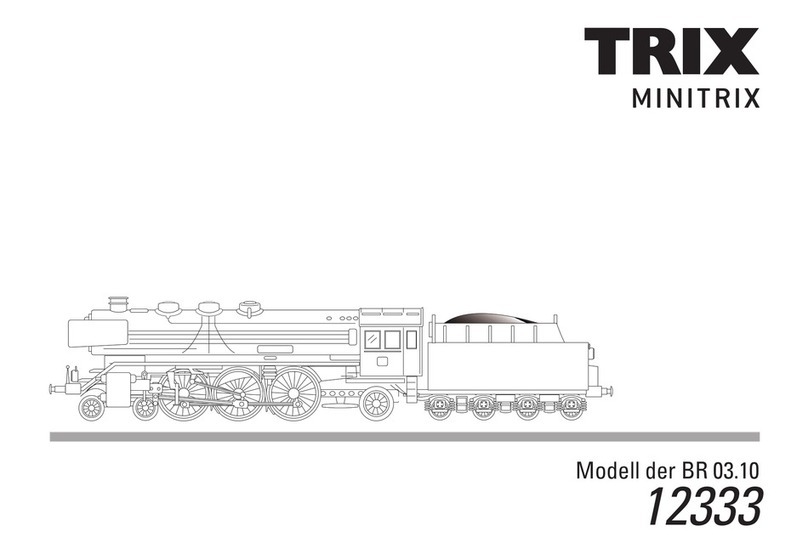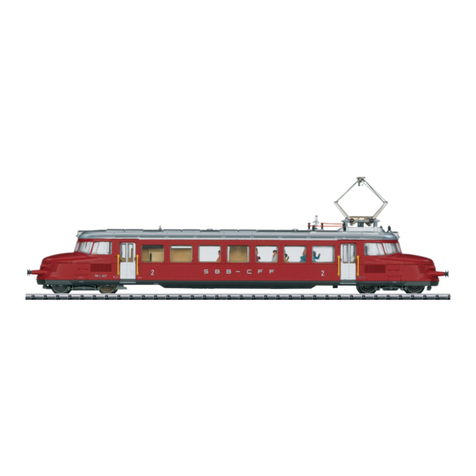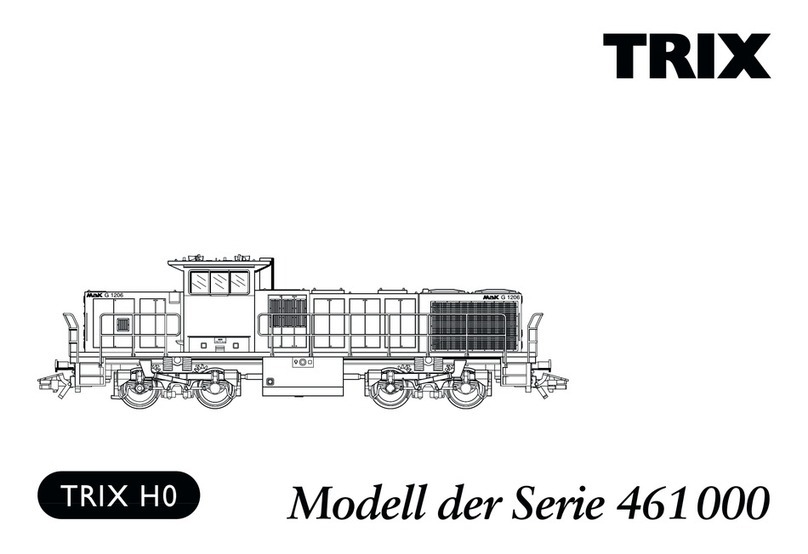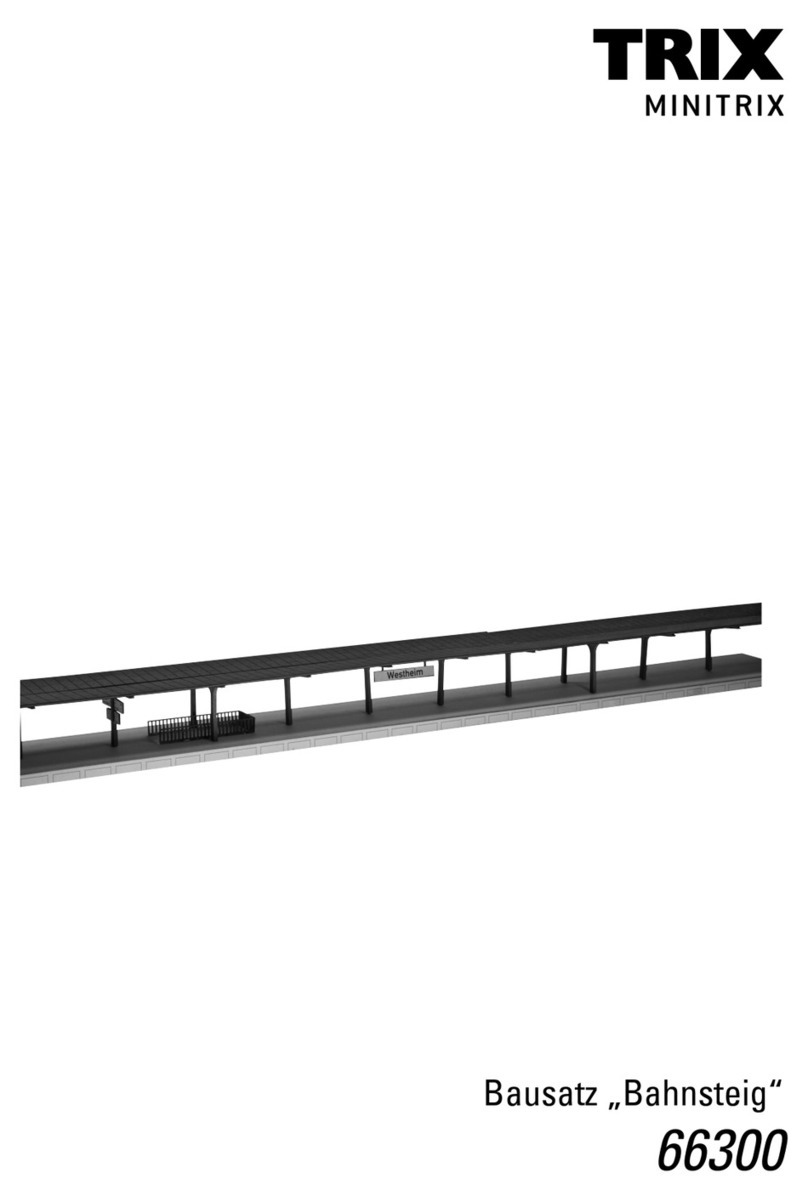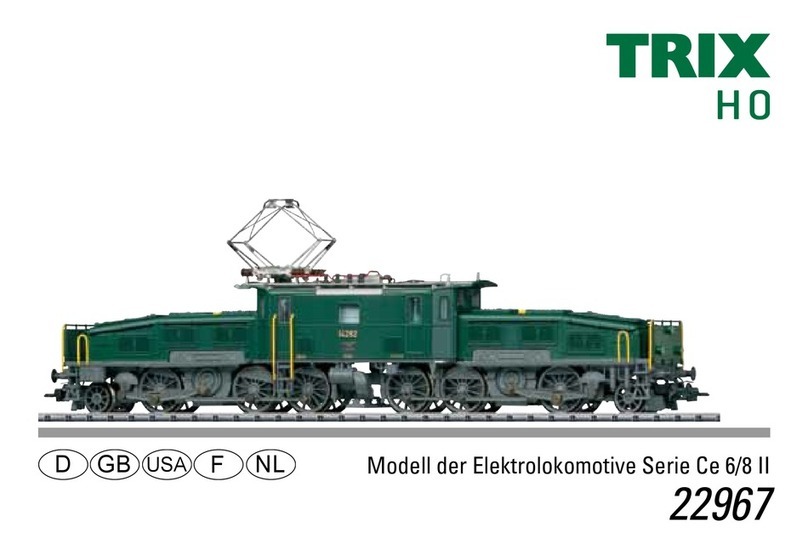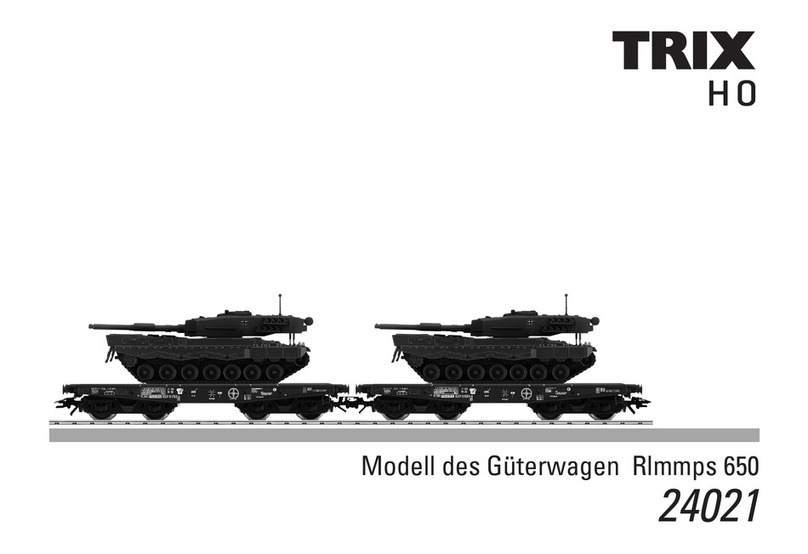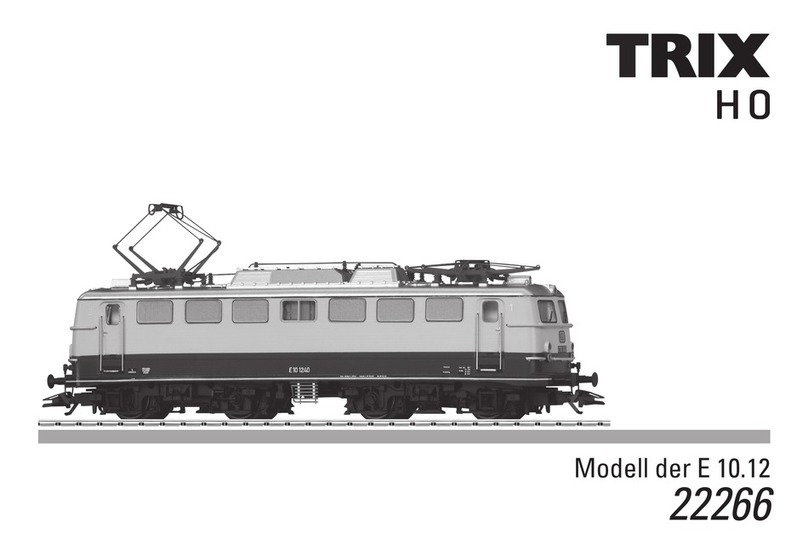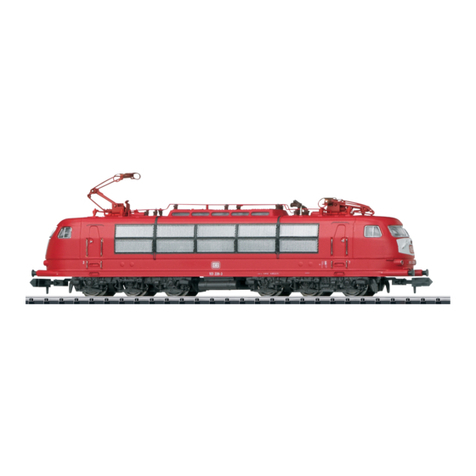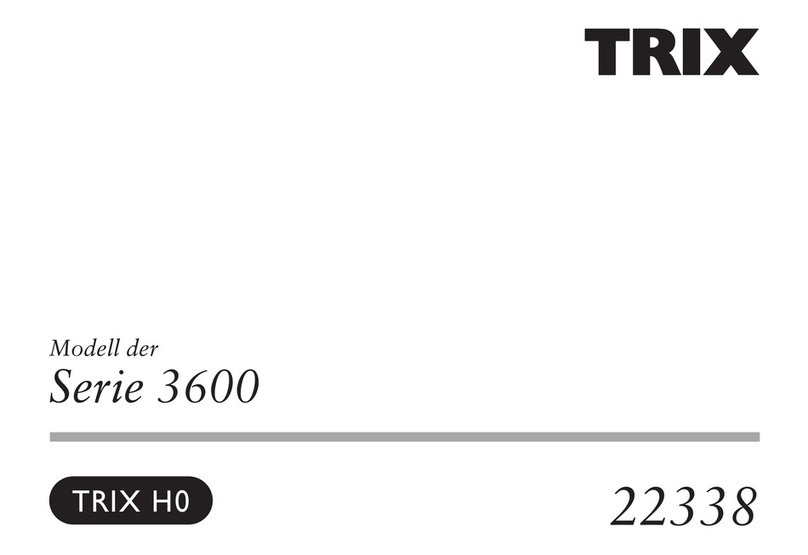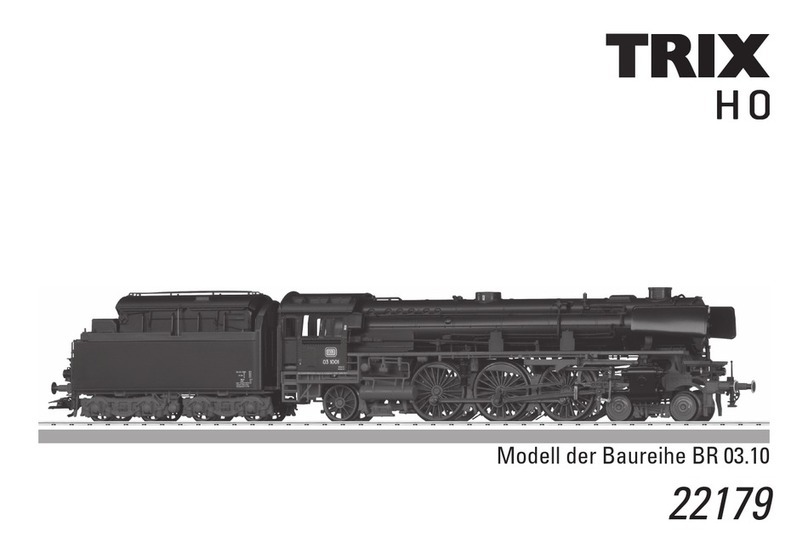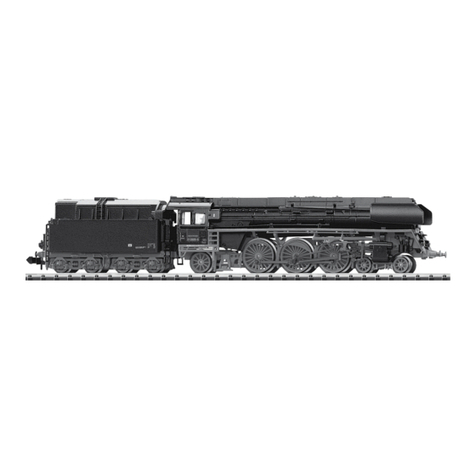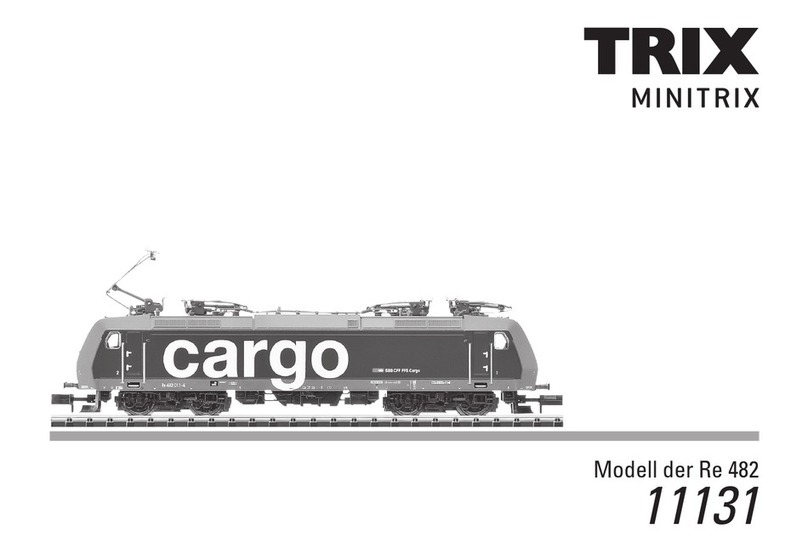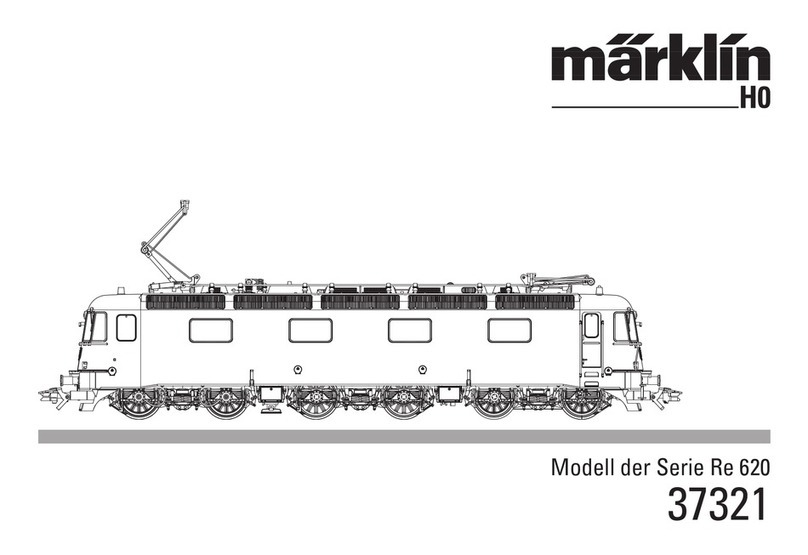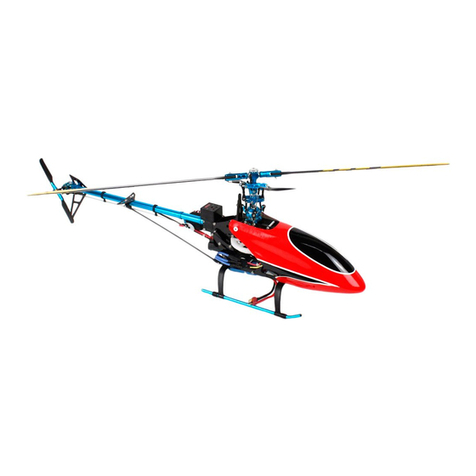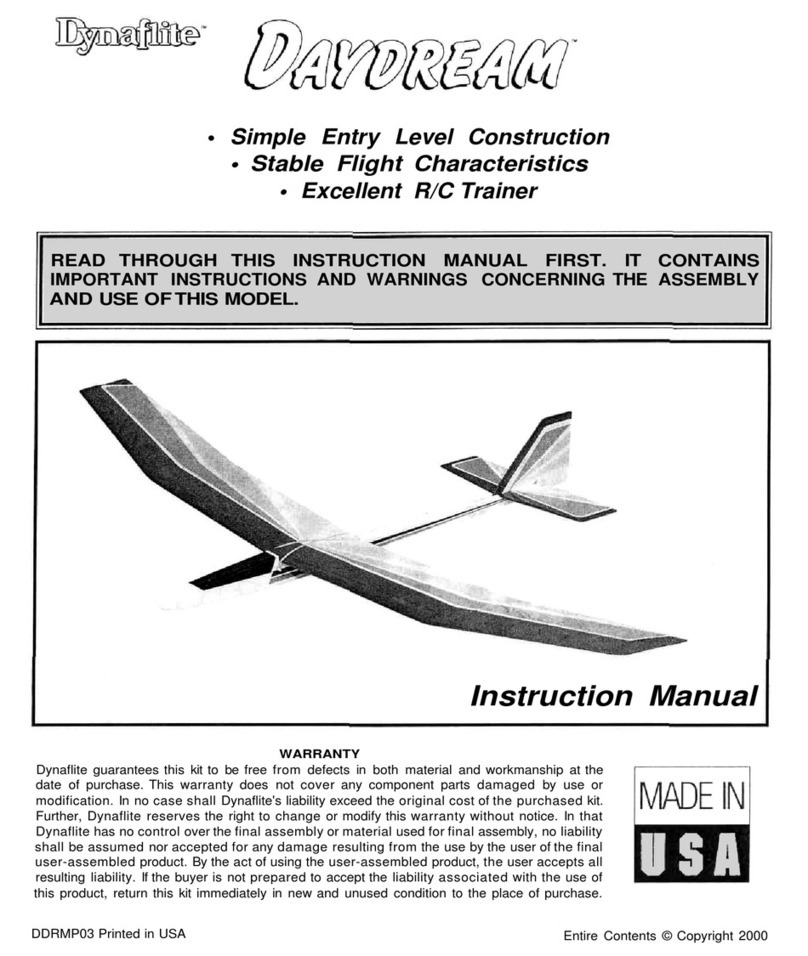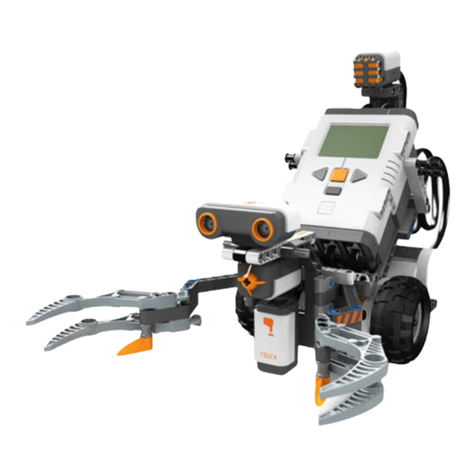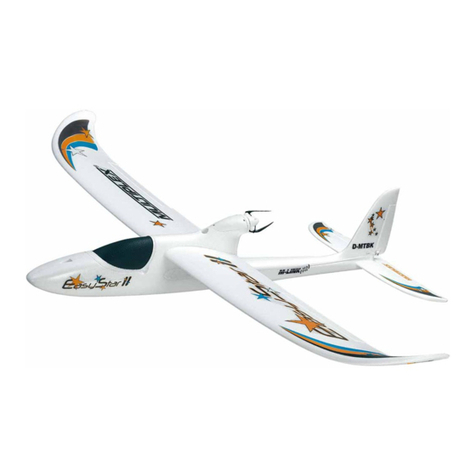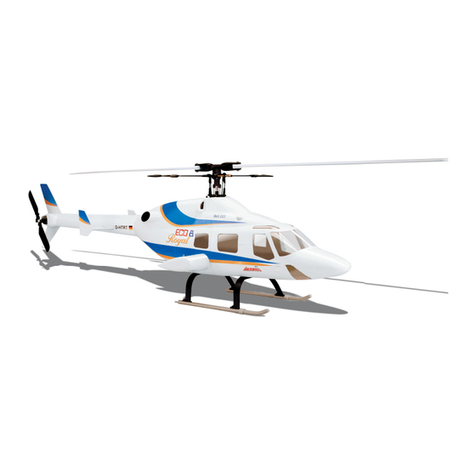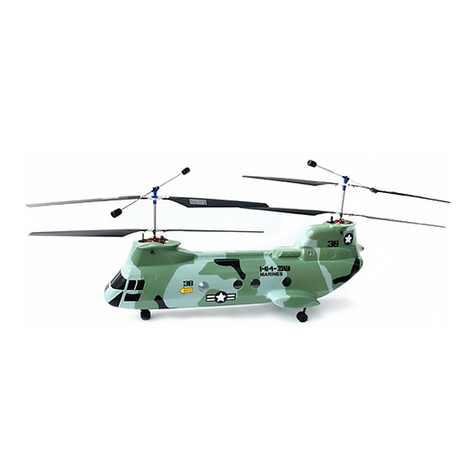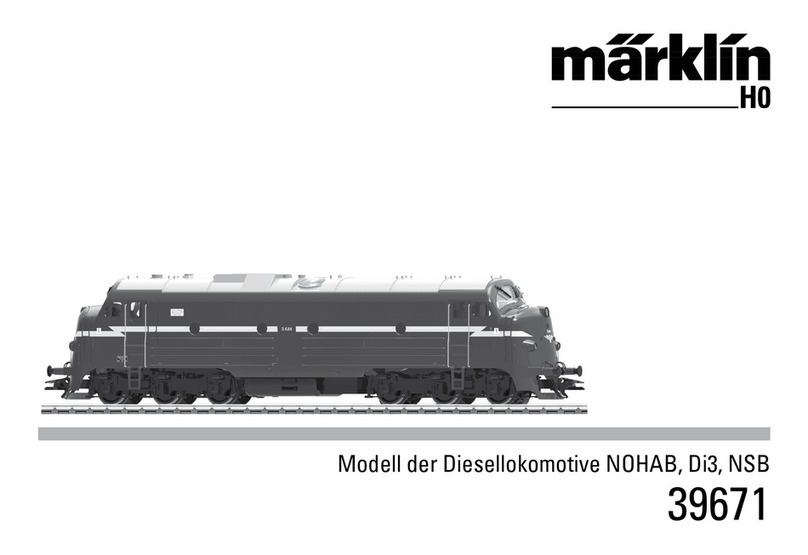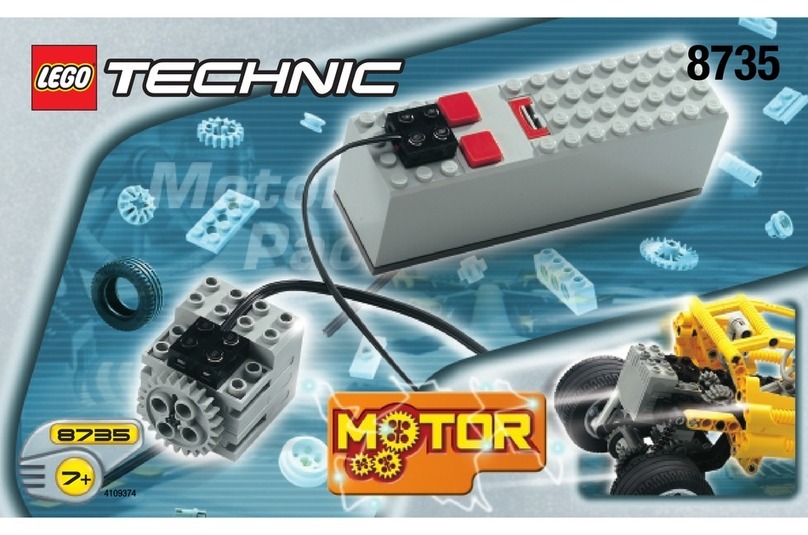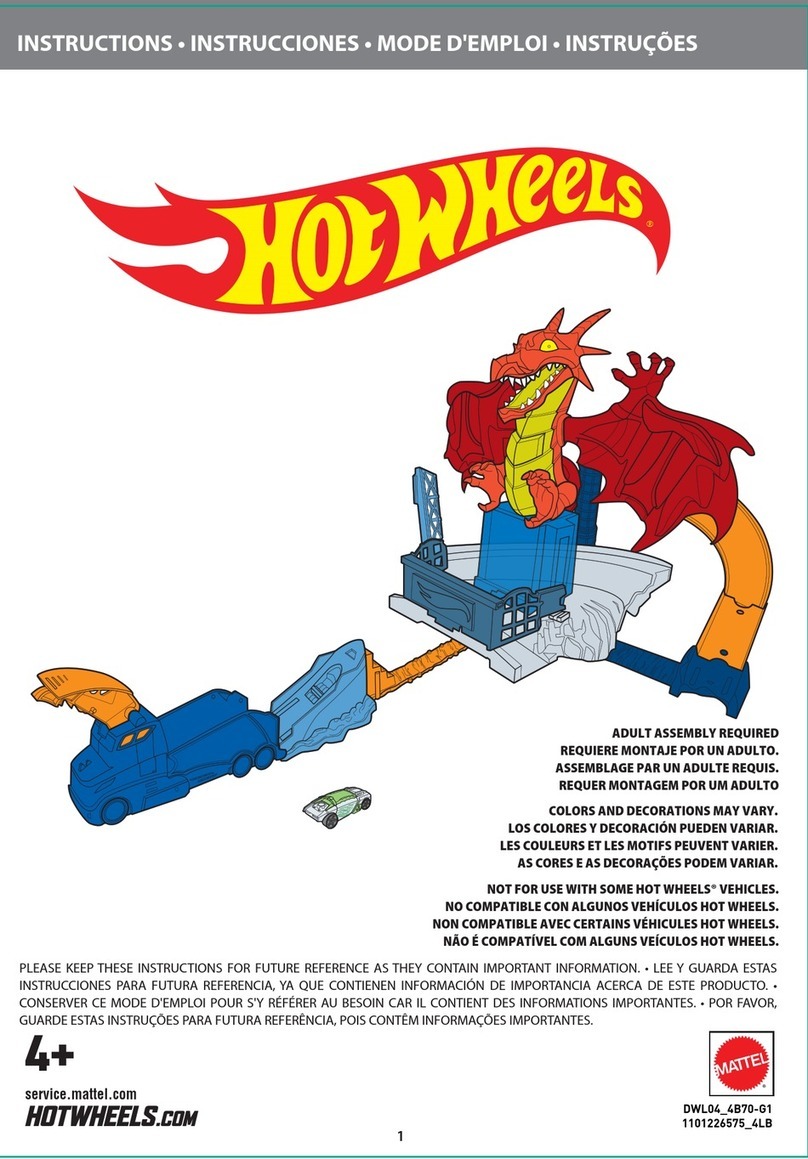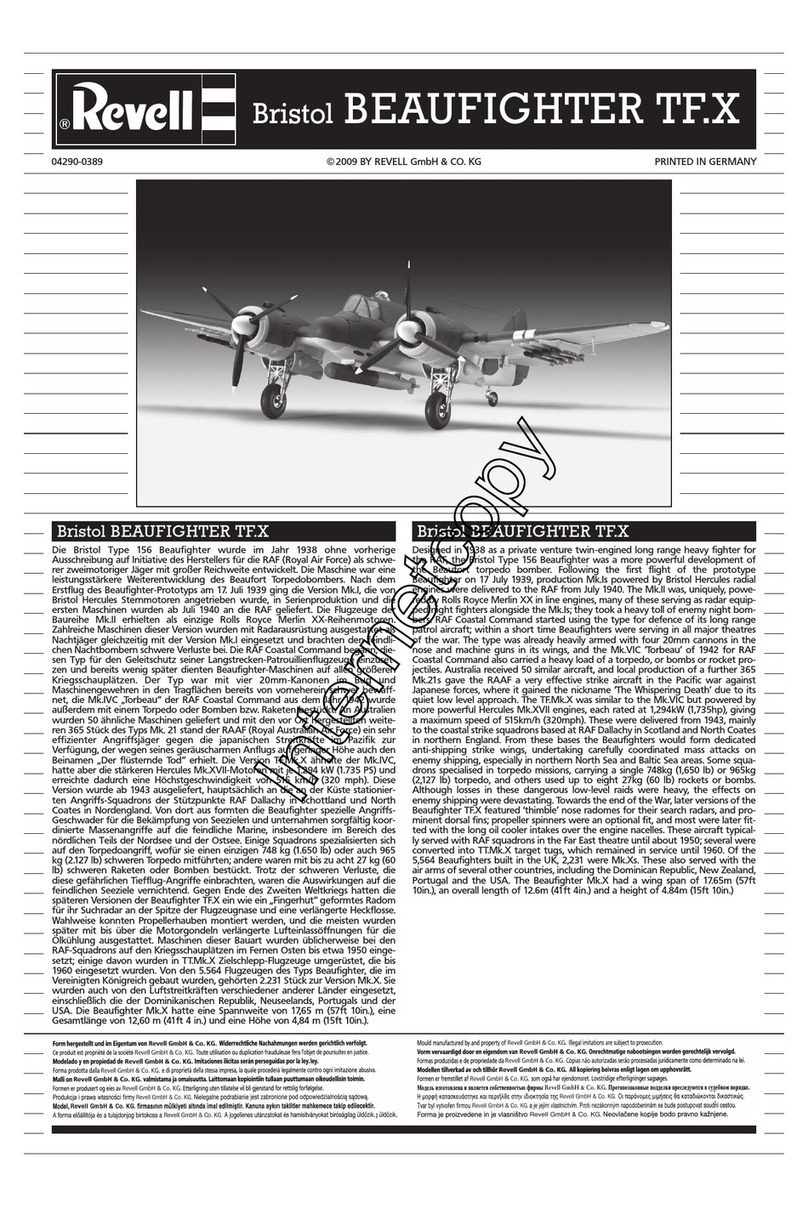5
Informatie van het voorbeld
Het treinstel van de serie 403, die de dieseltrein Trans
Europe Express serie 601 moest aflossen, mocht wat kosten
van de spoorwegen. Toptechniek moest namelijk gekoppeld
worden aan comfort. Vanaf 1974 werden één voor één drie
elegante, snelle railvoertuigen ingezet. De comfortstatus
van de TEE was daarbij natuurlijk onaantastbaar: de 403 be-
schikte uitsluitend over eerste klas zitplaatsen in coupés en
open afdelingen. Verder was het treinstel voorzien van een
klimaatinstallatie, draai/schuifdeuren, een restauratie en
een keuken. De absolute highlights waren een treinsecreta-
riaat en een telefooncel.
De ingenieurs stonden voor de uitdaging om rijtuigbakken
in een zeer lichte constructie te ontwerpen. In tegenstel-
ling tot bij de klassieke rijtuigbouw met staal werden het
onderstel, het bakgeraamte en de dak-, zij- en kopwanden
grotendeels van aluminiumlegeringen vervaardigd. Dat
was de moeite waard: Met een asbelasting van slechts 16
ton en dankzij de Allachs-aandrijving trok het treinstel in
100 seconden op van nul tot 200 kilometer per uur. De trein
reed over het algemeen 160 kilometer per uur en bestond uit
twee motorwagens (serie 403), een tussenrijtuig met open
afdeling (serie 404.0) en een tussenrijtuig met restauratie en
keuken (serie 404.1).
Als „allround talent“ was de 403 ook geschikt voor de dienst
in Oostenrijk en Zwitserland. Op de daken van de eindmotor-
wagen kon een voor het verkeer in Zwitserland benodigde
stroomafnemer met smal sleepstuk worden gemonteerd.
Informations concernant la locomotive réelle
Pour la rame automotrice de la Série 403, qui devait prendre
le relais du Trans-Europ-Express BR 601 actionné par une
locomotive diesel, la compagnie de chemin de fer ne recula
devant aucune dépense, en matière d’équipement, pour asso-
cier la technique de pointe au confort. Trois bolides des voies
furent mis en œuvre, l’un après l’autre, à partir de 1974. Le
niveau de confort associé aux TEE devait naturellement être
pris en compte : dans la 403, il y eut exclusivement des places
assises de première classe, dans des compartiments et dans
des wagons à couloir central. Une climatisation faisait autant
partie de l’équipement que des portes coulissantes et lou-
voyantes, un local de jeu et une cuisine. Fait saillant absolu :
un secrétariat à disposition dans le train, ainsi qu’une cabine
téléphonique. Les ingénieurs d’étude était confrontés au défi
d’avoir à concevoir les caisses des wagons en une forme de
construction extrêmement légère – contrairement au mode
de construction classique des wagons en acier, le châssis,
l’ossature de caisse, les tôles de toit, les tôles latérales et des
abouts étaient en grande partie en alliages d’aluminium. Cela
a été payant : avec uniquement 16 t de charge par essieu et
grâce à un entraînement par tous les essieux, le turbotrain à
grande vitesse accéléra de zéro à 200 km/h, en 100 secondes
seulement. Le train circulait la plupart du temps à la vitesse
de 160 km/h et était composé de deux véhicules à moteur
(BR 403), d’un wagon intermédiaire avec couloir central (BR
404.0), ainsi que d’un wagon intermédiaire avec salle à man-
ger et cuisine (BR 404.1). En tant que doté de talents multiples,
le 403 était également adapté à une exploitation en Autriche
et en Suisse. Sur les toits des rames automotrices de queue,
il a été possible de construire une prise de courant requise
pour la circulation en Suisse, avec un frotteur étroit.



